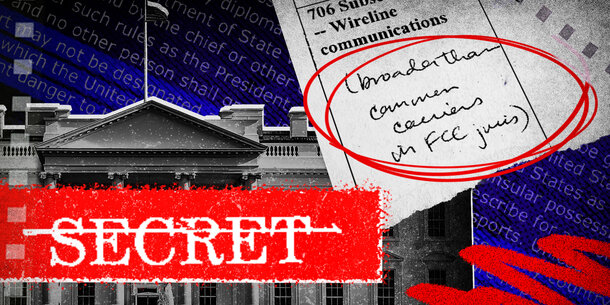Presidential Emergency Action Documents (PEADs) are executive orders, proclamations, and messages to Congress that are prepared in anticipation of a range of emergency scenarios, so that they are ready to sign and put into effect the moment one of those scenarios comes to pass. First created during the Eisenhower Administration as part of continuity-of-government plans in case of a nuclear attack, PEADs have since been expanded for use in other emergency situations where the normal operation of government is impaired. As one recent government document describes them, they are designed “to implement extraordinary presidential authority in response to extraordinary situations.”
PEADs are classified “secret,” and no PEAD has ever been declassified or leaked. Indeed, it appears that they are not even subject to congressional oversight. Although the law requires the executive branch to report even the most sensitive covert military and intelligence operations to at least some members of Congress, there is no such disclosure requirement for PEADs, and no evidence that the documents have ever been shared with relevant congressional committees.
Although PEADs themselves remain a well-kept secret, over the years a number of unclassified or de-classified documents have become available that discuss PEADs. Through these documents, we know that there were 56 PEADs in effect as of 2017, up from 48 a couple of decades earlier. PEADs undergo periodic revision; although we do not know what PEADs contain today, we know that PEADs in past years—
- authorized detention of “alien enemies” and other “dangerous persons” within the United States;
- suspended the writ of habeas corpus by presidential order;
- provided for various forms of martial law;
- issued a general warrant permitting search and seizure of persons and property;
- established military areas such as those created during World War II;
- suspended production of the Federal Register;
- declared a State of War; and
- authorized censorship of news reports.
The Brennan Center’s Liberty and National Security Program researches PEADs and advocates for greater transparency and oversight of them. As a resource to others interested in this topic, below we have compiled our own analyses and op-eds; a running list of congressional actions; and government documents discussing PEADs, including documents that others have obtained through Freedom of Information Act (FOIA) requests and placed on the internet and documents that we have obtained through our own FOIA or Mandatory Declassification Review requests.

